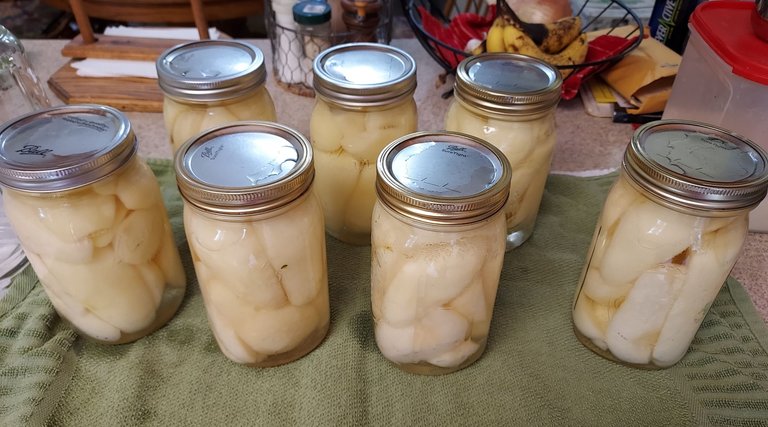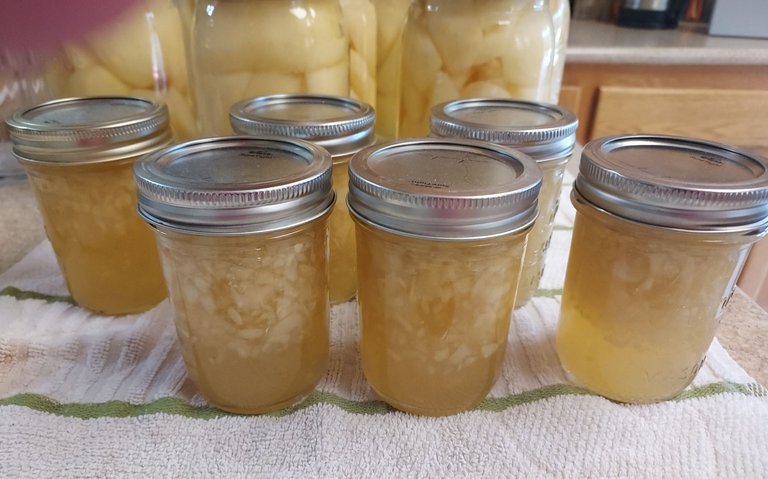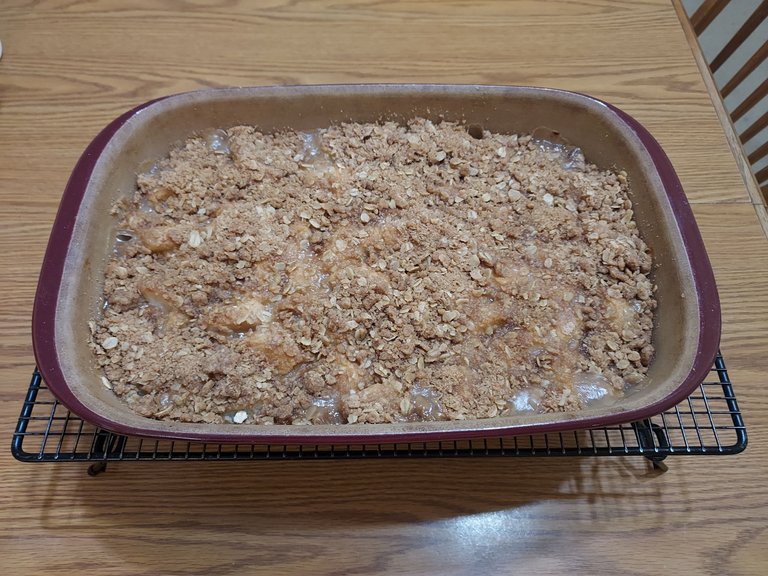I hadn't done much canning yet this year, just some strawberry jam. I used to can various jams and jellies, cherries, plums, peaches, pears, green beans, beets, applesauce,and assorted tomato recipes nearly every year. Nowadays I haven't as much energy as back then, nor as many mouths to feed, nor as many hands to help with the tasks, and I find myself reluctant to launch into canning projects.
However, a local grocery store had a really good case price for Bartlett pears, so I succumbed to the old urge to buy fruit and can it for later. Part of my motivation was simple curiosity to see if I was still up to the task. I hadn't forgotten how, but did I have enough ambition to do it?
The answer is yes, but I spread it out over five days. Those two boxes of pears (about 60 pounds total) resulted in 21 quarts of pears, 6 little jars of pear jam, and two pear crisps. The last 9 pears went into today's crisp; well, 8 of them went in. One was 'way overripe, and some of the others were borderline, but I was able to use them to make one last marvelous dessert.
The first day of canning, I remembered to take some photos for a Hive post. Set-up takes some time. In this photo you see the canner kettle (which is about half full of water), and the kettle for syrup on the left. Behind the canner kettle is a small kettle with the lids in it, keeping warm. On the small counter to the left is a ladle for the syrup, a whisk for stirring in the sugar, and a wide mouth funnel. (Although I didn't end up using it, since the jars were also wide mouth.)
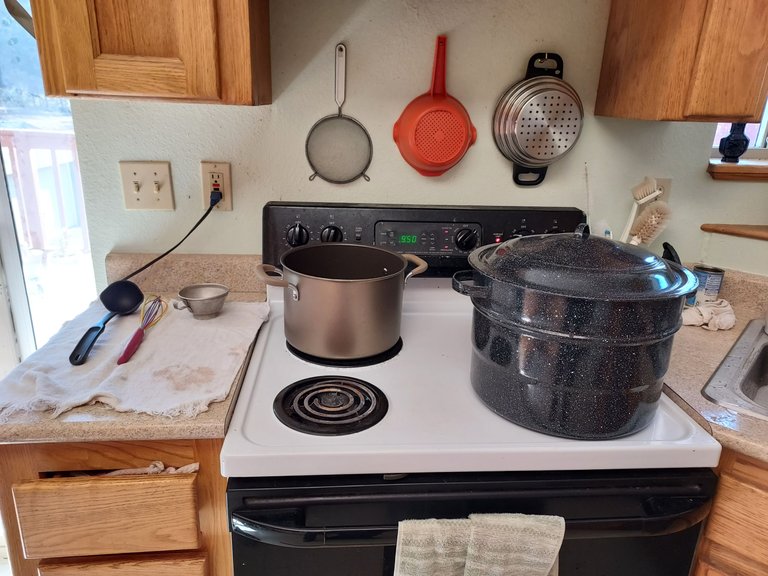
To the right of the corner sink I positioned my two big bread bowls for the peeled pears, and a cutting board and knives.

After washing the jars, I put them in the oven at low temperature (about 170F) to keep them nice and hot.
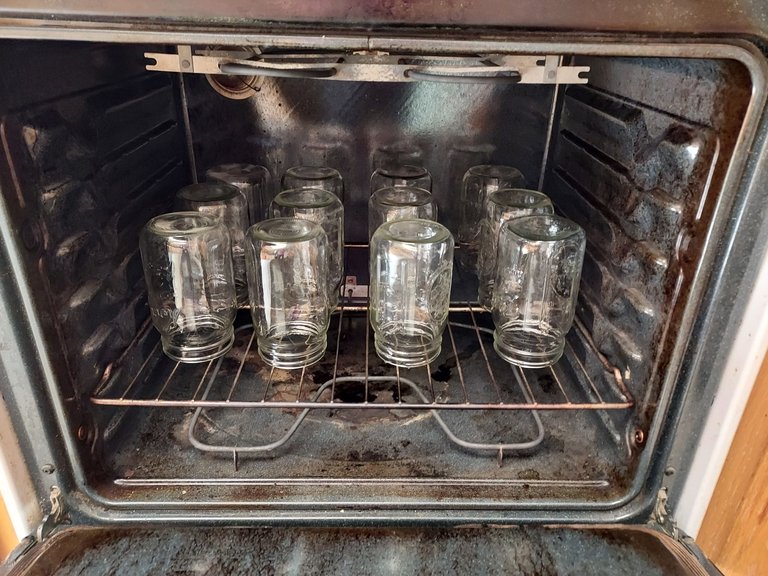
I went ahead and washed more jars for later and set them on a clean towel to drain and dry.
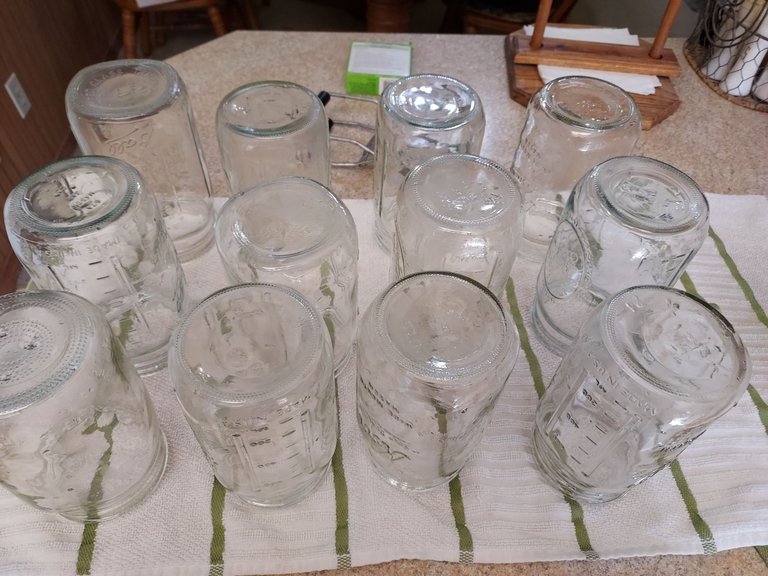
The pears were barely ripe enough to can the first day, but each day they got a little bit riper, and they all turned out just fine.

I peeled the pears and plopped them into one of the big bread bowls. The first two days, I did not add anything to prevent darkening. The third time, I added some lemon juice to the water in both bowls. I'm not sure it made much difference.
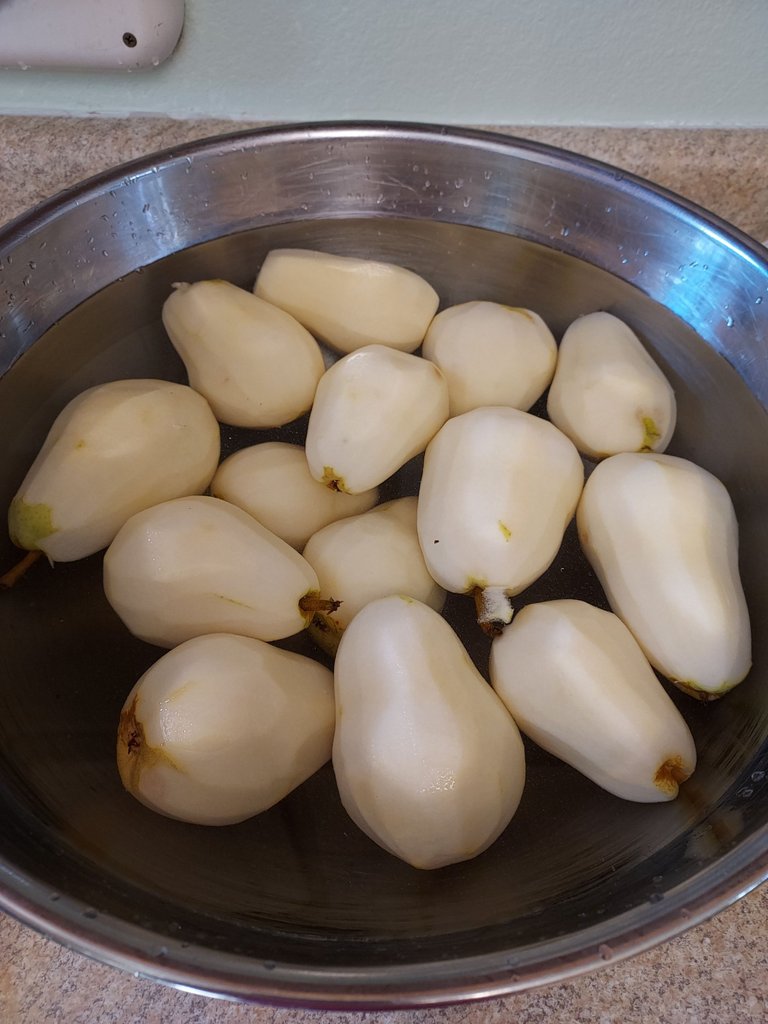
Next, I cut the pears in quarters, removed the core, and dropped them into the second bowl. I suppose I could just put the quarters back into the first bowl, but it's easier to find the cut up ones if they are in their own bowl.
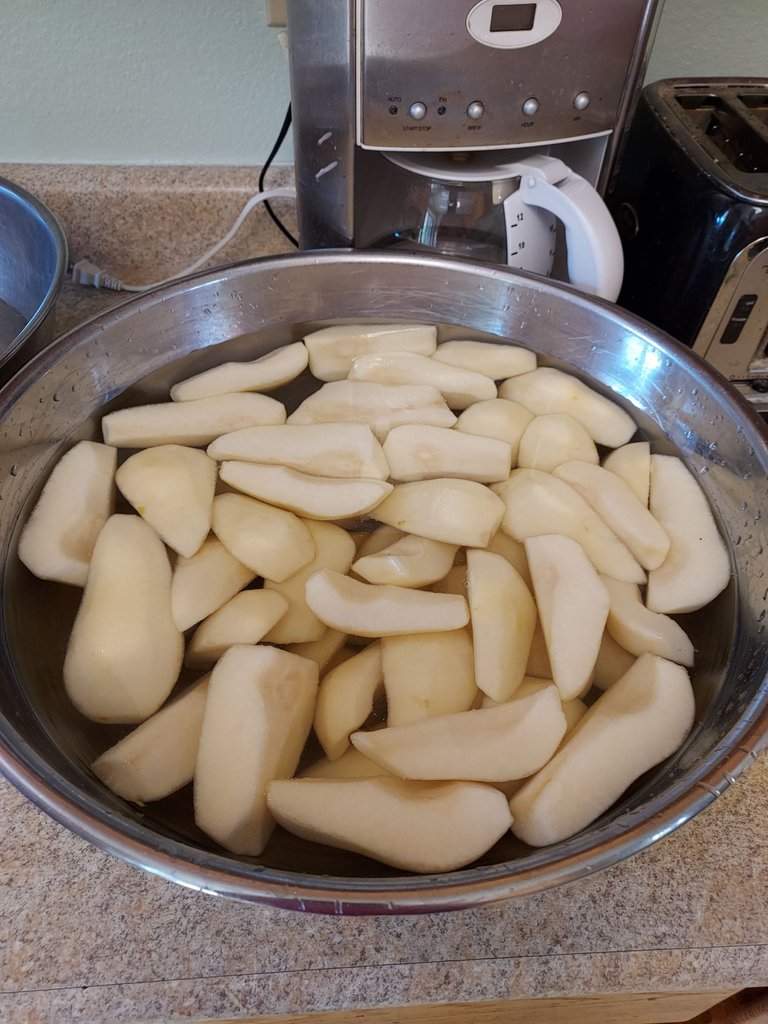
The first two days I used the hot pack method, because it usually keeps the fruit from floating up so badly in the jar. The third day I did cold pack. This time it didn't seem to make much difference; most of them floated up a bit, regardless. Hot packing makes one more messy step, which is why I have not always done it that way. Here you see the pear quarters warming up in the syrup. They get a bit too hot to comfortably handle, which further complicates the process.
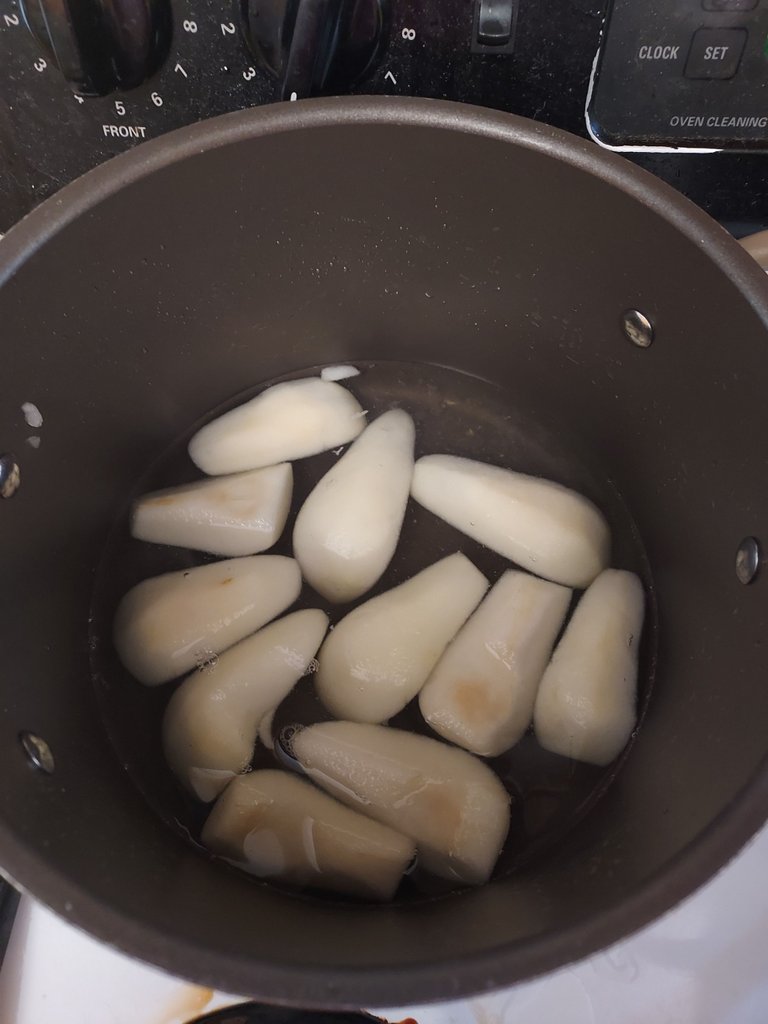
Canning instructions often use words like "immediately" and "quickly." But when one is working alone, immediately and quickly don't always happen. I simply fill the jars as quickly as I can, usually with a gap of time toward the end when I have to prep just a few more pears to fill the last jar. I had to keep reminding myself to work out the air bubbles before putting on the lid and ring. I use a thin table knife, although the instructions nowadays say to use something rubber or plastic. I don't have a rubber or plastic tool thin enough for the job.
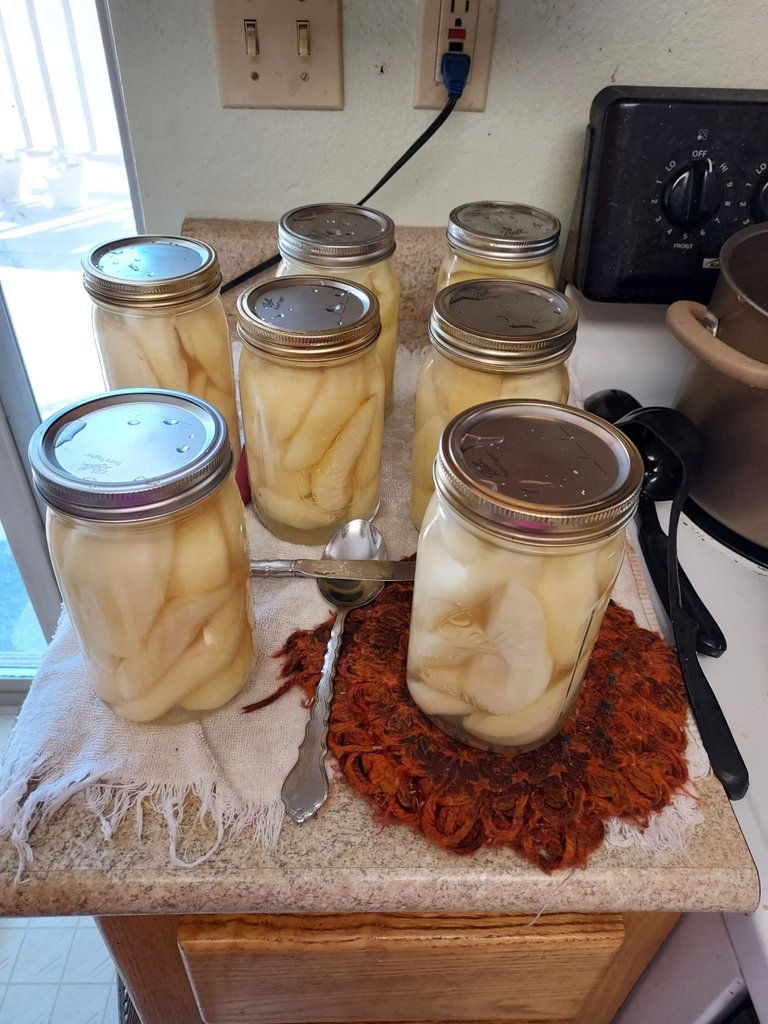
And here's the finished product, done processing and cooling off. All of the jars sealed, too.
